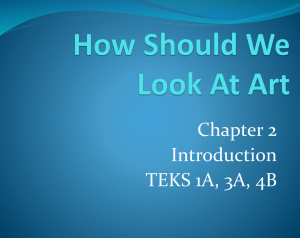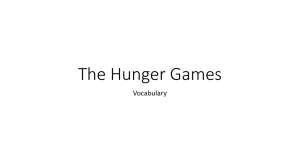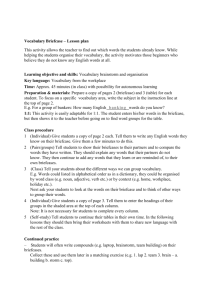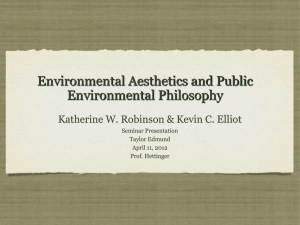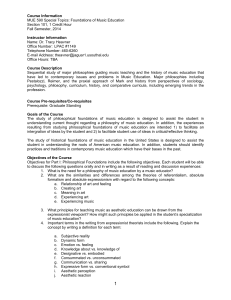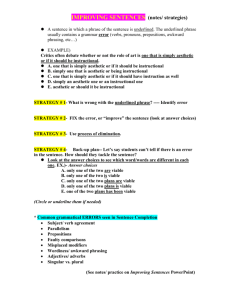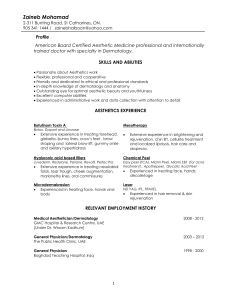How Should We Look At Art
advertisement
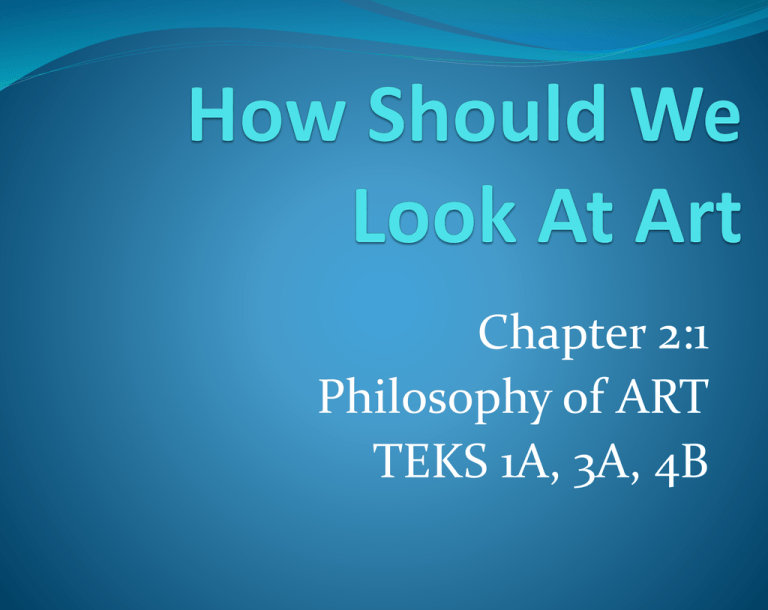
Chapter 2:1 Philosophy of ART TEKS 1A, 3A, 4B Chapter 2:1 TEKS 1A, 3A, 4B Objectives: As a Student I will identify factors that might determine whether or not something is art. I will describe the aesthetic experience and why it is important. Vocabulary: Philosophy of art-the asking and answering all kinds of questions about art. Design-logical harmonious relationship among all the parts of an art work Traditional-has a very familiar and recognizable form or style Abstract-does not recognize things you see in real life. Philosophy-asking the serious hard questions and trying to answer them. Philosophy of art asks the same type of questions. Look at art quiz objects from chapter 1. What do these objects have in common Is the relationship of the animals in this cave painting harmonious? Does a stuffed goat with a tire around its middle have a good design? They are placed haphazardly and some are not finished. Does a ceramic briefcase have a better design than a real briefcase. Which is a work of art, which is not, why or why not? Many things that are not art can have a good design. Write a paragraph of 3-5 sentences answer this question…What do these things have in common? Aesthetics: What is the role of ART Philosophers? In What ways does a Sikorski X Wing plane demonstrate high standards of unity and balance? Is it ART? To ask a series of questions about art To discover how to evaluate art To study how people respond to art To study how art relates to lives and societies Define DESIGN… The plan that artist use to organize the art elements…line, shape, form, space, color, value, and texture. If something has good design, is it necessarily good ART? Not always Sort the images on this slide into three categories: ART Maybe not ART Sikorsky X Wing plane Charlie Brown Lapstake Magnified crystals of vitamin toilet fork Teddy bear porcelain throne refrigerator Ceramic briefcase David by Michelangelo Discs All of the previous slides could be considered art depending on the context in which they are used. Crystallized vitamins hanging in a museum would be considered art, however located in a science book not likely Canadian Artist Marilyn Levine began creating realistic clay sculptures. Often they look like worn leather jackets, shoes or briefcases. She reinforced clay with nylon fibers before rolling it into thin slabs to construct the leather-like forms. She sees the way leather becomes marked and shaped with use as a record of how humans used it. Aesthetic Experience What is it. Art works do not have to be useful… •Sometimes it is referred to as the ah-ha experience or got ya experience.. •The theory of perceiving and enjoying something for its beauty and pleasurable qualities to explain and categorize our responses to art forms. •PRINT, SKIP LINES Pick three of the most beautiful visual things to you and describe each of them in a paragraph. Include which of these you usually think of as ART. •4th paragraph-explain: Why should you not depend entirely on your aesthetic experiences in determining if something is art? •New and different experiences will influence how one appreciates art work. •Which of these images is not usually considered art? •What is the difference between what is usually considered art and what isn’t? •Which one was intentionally created as ART? •John Vogel Joseph Alberts •HUMAN INTENTIONS is a necessary factor in determining whether or not something is ART. PRINT, SKIP LINES •List some factors that will determine whether something is to be considered an artwork. •Describe 7 of the most beautiful things you have ever seen. • Are these works of ART? Closing: Glance through this book Pick pictures or objects which do not feel like a good representation of aesthetic ART or they would not expect to be called ART.
